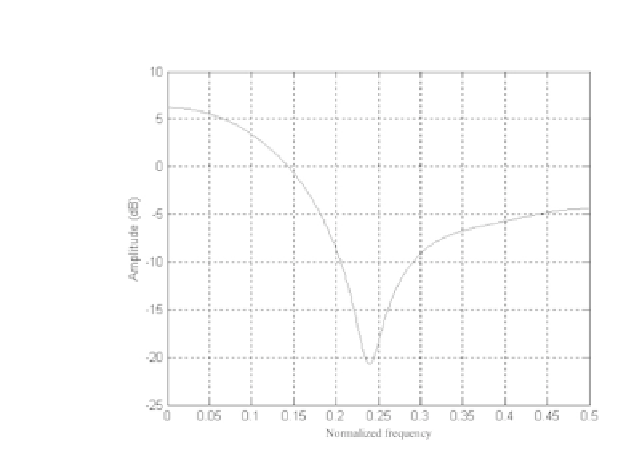Cryptography Reference
In-Depth Information
Figure 2.25 - Frequency response of a multipath channel.
where
T
m
is the multipath spread of the channel as a function of the delays
τ
n
of the different paths.
Two modulated signals whose carrier frequencies are separated by a quantity
higher than the coherence band of the channel are attenuated by the latter in
a non-correlated way. Thus, at a given instant, if one of the two signals is
strongly attenuated by the channel, it is highly probable that the other will be
little affected by the channel.
When band
B
occupied by a modulated signal is lower than the coherence band,
the channel is frequency non-selective. It shows a flat frequency response and a
linear phase on the bandwidth of the modulated signal. The modulated signal
just undergoes attenuation and dephasing on passing through the channel. We
will illustrate this point by considering the transmission of an M-QAM signal
by a frequency non-selective channel.
Let
s
(
t
)
be an M-QAM signal provided at the input of the frequency non-
selective multipath channel.
s
(
t
)=
A
i
iT
)sin2
πf
0
t
a
i
h
(
t
−
iT
)cos2
πf
0
t
−
b
i
h
(
t
−
i
and let
r
(
t
)
be the response of the channel at
s
(
t
)
:
n
=1
ρ
n
i
T
)cos
2
π
(
f
0
+
f
n
)(
t
τ
n
)
M
a
i
h
(
t
−
τ
n
−
−
r
(
t
)=
A
τ
n
)
−
i
T
)sin
2
π
(
f
0
+
f
n
)(
t
b
i
h
(
t
−
τ
n
−
−



